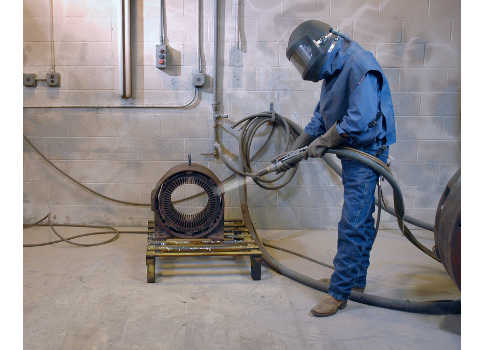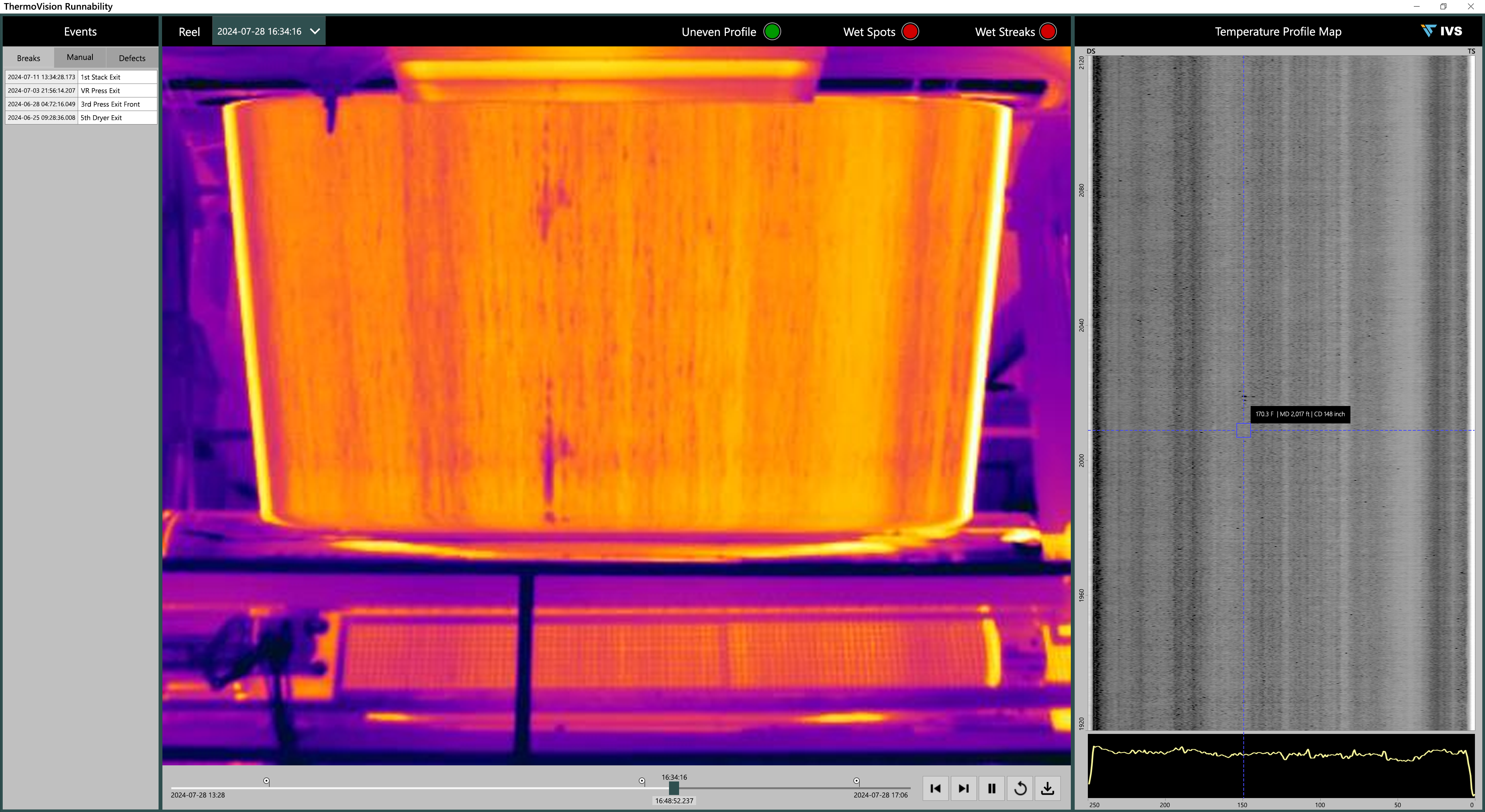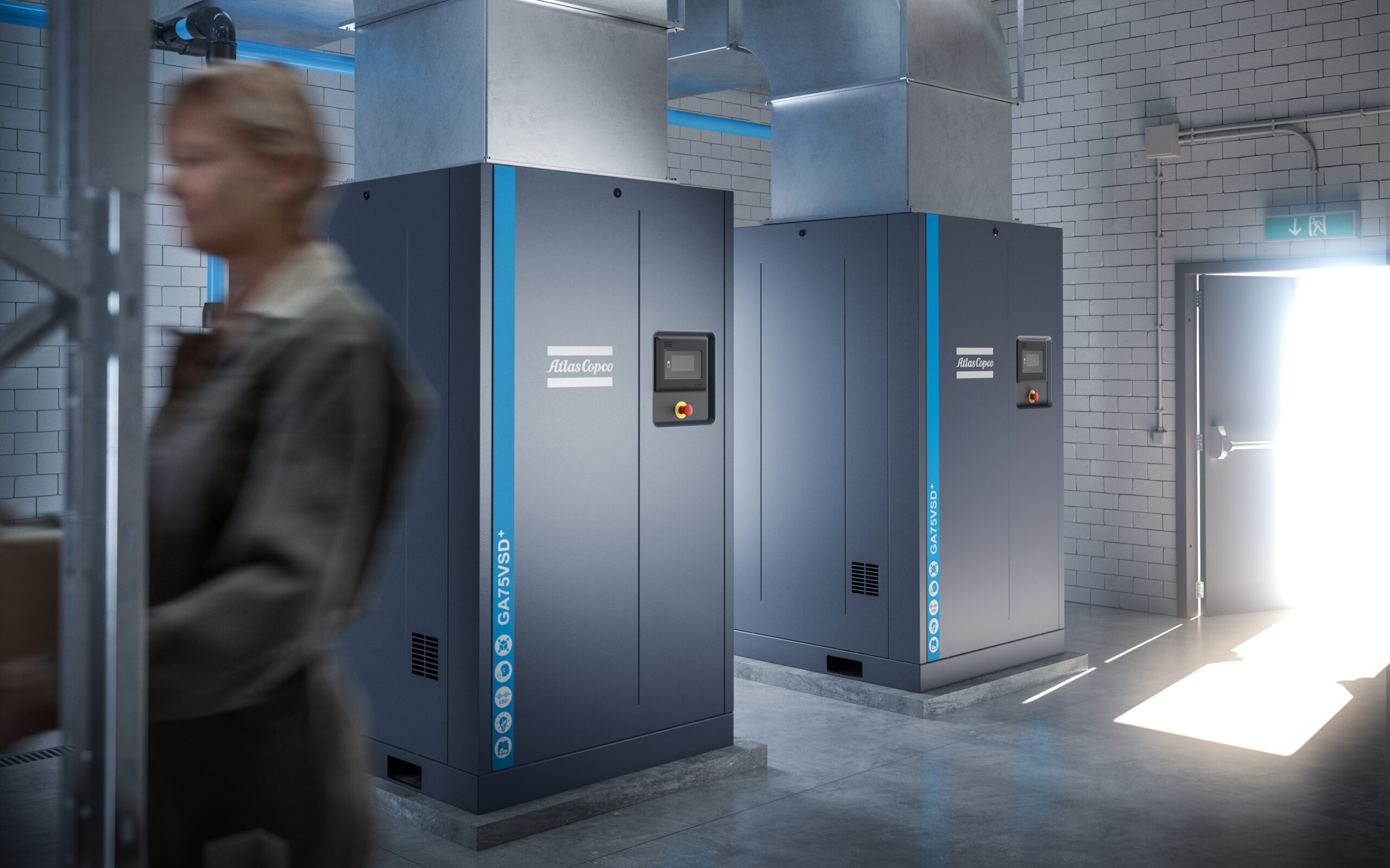EASA AR100 details steps to take to clean, repair, and test equipment.

In a previous article ("A systematic approach to ac motor repair," Plant Engineering, April 2015), I described the good practices for electrical repair found in ANSI/EASA Standard AR100 Recommended Practice for the Repair of Rotating Electrical Apparatus, and the significant impact they can have on motor efficiency and reliability. But that was only part of the story, because mechanical repairs—and even documentation, cleaning, and inspection—can also markedly affect motor reliability and efficiency.
My focus here is on the mechanical and "other" repair good practices prescribed by AR100 that are mandatory in EASA’s motor-repair accreditation program, including lubrication, bearings, and repair of frames, shafts, and bearing fits.
General section
The stated purpose of AR100 is "to establish guidelines in each step of electrical apparatus rewinding and rebuilding." To accomplish this, the document provides practical guidance on all aspects of rotating electrical apparatus repair, especially those that apply to motors and generators.
Identification and labeling: The General section of AR100, for example, provides recommended identification practices for service center labeling, record keeping, and original and replacement nameplates. Labeling should identify the service center and repair-order number, and the repair record should contain key information such as nameplate data, electrical and mechanical test and inspection data, and winding data. If the repair meets the requirements of EASA’s accreditation program, the motor should be labeled to indicate conformance (see Figure 1).
Identification of cause of failure: To conform with AR100, the repair record should also identify the primary cause of failure, if possible. Diagnosing and correcting the problem during the repair helps prevent a recurrence and increases the reliability of the motor. For the end user, this documentation can facilitate troubleshooting in the event of a problem with the motor installation. It can also be a useful reference for the service center should the motor fail again.
Cleaning and inspection: The General section recommends cleaning and inspecting all windings and parts, but avoids delving into the wide variety of cleaning methods (see Figure 2). Although this recommendation seems obvious, the document would be remiss without it.
Cooling-system check: The final paragraphs in the General section recommend inspecting the cooling system (including fans, cooling ducts, air baffles, and cover plates) to confirm that it is clean and operational (see Figure 3). Many standards and specifications focus solely on testing. By recognizing that good-practice inspections lead to corrective actions, AR100 exceeds this, providing added value to service centers and end users.
Exterior finish: The document also recommends that the exterior finish be cleaned and painted and that the shaft extensions be protected against corrosion. Although these may be subtle points, they provide another indication that a good-practice repair has been performed.
Packaging and transportation: One of the final recommendations in the General section is to package the motor appropriately for the mode of transportation and the distance to be traveled. This may include blocking the shaft to prevent movement during shipment, identifying the presence of shaft blocking, shipping oil-lubricated motors without oil, and identifying the need to add oil lubricant before operating the motor.
Mechanical Repair section
The Mechanical Repair section of AR100 covers the major mechanical components of the motor (e.g., shafts, bearings, frames, bearing housings, and laminations). The text here is generously supplemented with tables that provide many important dimensions and tolerances (see Table 1). For electric motor rebuilders, a distinct advantage of AR100 is having these tables in one readily available place, rather than needing to find them in individual source documents from the American Bearing Manufacturers Association (ABMA), International Electrotechnical Commission (IEC), and National Electrical Manufacturers Association (NEMA).
Shafts and shaft extensions: The Mechanical Repair section stipulates that shafts and shaft extensions be checked for wear, cracks, scoring, and straightness. To that end, the tolerances for diameters, run-out, and keyways are based on NEMA and IEC standards. The supporting text also provides guidance to help service centers achieve reliable repairs—e.g., that keyseats (keyways) should accommodate keys to a tap fit. Dimensional conformity is critical to assure a proper fit when end users install attachments such as couplings on the output shaft.
Bearings: This section also provides two comprehensive tables of specific housing and journal fits and tolerances for ball and cylindrical roller bearings. Of all the tables in AR100, service centers probably refer to these two the most, because proper fits significantly increase the potential for obtaining full-rated bearing life.
Lubrication: On the topic of lubrication, practical recommendations in the Mechanical Repair section include: checking grease passages to make sure they are clean, using grease that is compatible with the customer’s lubricant, and filling the grease reservoir to about one-third of capacity if the motor manufacturer’s instructions are not known.
Verifying grease compatibility is crucial (see Figure 4). For example, service centers often use polyurea-based greases, which usually are not compatible with lithium-based greases that many end users employ. Confirming the use of a compatible lubricant as AR100 recommends can prevent a premature bearing failure.
The point about grease fill is critical not only to bearing and motor life, but also to the energy efficiency of the motor. Over-lubrication can cause ball or roller "skidding" that increases friction; it also can churn the grease, resulting in higher temperatures and increased losses (i.e., reduced efficiency). The ultimate consequence could be a premature and potentially catastrophic bearing failure.
Frame and bearing housings: Touching on other aspects of electric motors, the Mechanical Repair section recommends inspecting the frame and bearing housings for cracks and breaks. This is another example of how AR100 goes beyond tests and measurements, providing guidance for more reliable repairs that will result in greater uptime for end users. This section also provides tables for use in verifying that face and flange mounting-surface tolerances, eccentricity, and run-out comply with NEMA and IEC standards. Verification of these tolerances helps protect motors from excessive mechanical stress due to face or flange distortion.
Dynamic balancing: Dynamic balance of the rotor is essential to the proper operation of a motor. In the absence of a customer-specified level, AR100 prescribes balancing to the International Organization for Standardization’s (ISO) quality grade of 2.5 to assure vibration levels are well within NEMA and IEC standard values. A cautionary note also recommends making certain that balance weights do not interfere with other components. Low vibration levels extend bearing life; and adequate clearance between balance weights and other components helps avoid rapid and possibly immediate failure.
Accessories: The Mechanical Repair section closes with the recommendation that accessories be tested and verified as applicable. Another example of the guidance in AR100 is that replacement bearing temperature sensors or protectors should either be identical to the originals or have the same electrical and thermal characteristics. That is concise but extremely important advice. Replacing a resistance temperature detector with a thermocouple device would result in an incorrect temperature indication (if any) that could cause a bearing failure. It could also damage or destroy the motor’s external temperature-sensing control circuitry.
Testing section
Following the good-practice procedures in AR100 builds quality and reliability into each repair. For example, the document devotes an entire section to inspecting and testing repaired motors-often prescribing multiple tests to verify the suitability of a motor to perform in accordance with its nameplate ratings.
Mechanical tests: The recommended mechanical tests include checking the exact operating speed and measuring vibration levels at no load.
Instrument calibration: The Testing section concludes with another good practice-instrument calibration. AR100 stresses the importance of having instruments calibrated to a national standard at least annually, and of clearly labeling them with the calibration date and vendor’s name. This procedure benefits end users by avoiding such issues as a bearing failure due to a shaft journal or housing fit that is too tight or too loose.
By specifying that apparatus rebuilders follow the recommended practices in ANSI/EASA AR100, end users can be sure of receiving quality repairs that enhance reliability and maintain (or, in some cases, improve) motor efficiency. And those who choose EASA-accredited service centers for ac machine repairs will have the added assurance of independent, third-party audits that all requirements will be met. To view or download ANSI/EASA AR100, go to www.easa.com/energy. Information about EASA’s motor-repair accreditation program also is available at www.easa.com/accreditation.
Thomas Bishop, PE, is a senior technical support specialist at the Electrical Apparatus Service Association (EASA), St. Louis; 314-993-2220; 314-993-1269 (fax); [email protected]. A CSE Media Partner, EASA is an international trade association of more than 1,900 electromechanical sales and service firms in 62 countries. For more information, visit www.easa.com.
The Bottom Line:
- AR100 provides practical guidance on all aspects of rotating electrical apparatus repair, especially those that apply to motors and generators. ·
- Mechanical repairs—and even documentation, cleaning, and inspection—can also markedly affect motor reliability and efficiency.
- For electric motor rebuilders, a distinct advantage of AR100 is having tables covering dimensions and tolerances in one place, rather than needing to find them in individual source documents.
- AR100 devotes an entire section to inspecting and testing repaired motors-often prescribing multiple tests to verify the suitability of a motor to perform in accordance with its nameplate ratings.
Key Words:
Among the articles on www.plantengineering.com, KEYWORD: EASA are the following:
Repair of replace motors Webcast: Viewer questions on motor matters
Viewer questions from the Plant Engineering Webcast presented by Thomas Bishop of EASA.
Relationship of torque and shaft size
A rudimentary understanding of how shaft sizes are determined can be helpful to anyone who works with pumps, fans, elevators, or any other motor-driven equipment. Engineers often design using an ample safety factor, but consider modifying a shaft only with good engineering support. The greater the consequence of failure, the more generous the safety factor should be.
EASA launches motor repair accrediation
The value of an accreditation program was supported by solid research—EASA surveyed Plant Engineering readers in 2014 to find out what concerns they had about motor operation and reliability. It also was driven by an idea that repaired motors were not reliable.



